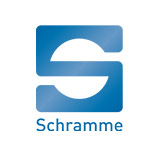Because the term quality is often equated with the quality of products and manufacturing processes, it is often delegated to a few people in the company as a specialized task. In addition, the quest to avoid recourse and penalties has further reduced the focus of quality on successful certification or auditing. If problems do occur in day-to-day business, quality is called upon in the role of a "fireman" to quickly extinguish the source of the fire. In view of the scarcity of resources, the role of fire extinguisher has meanwhile become the main task for many people in quality management. With a view to the understanding of quality in the company, one can speak here of a rather classically shaped understanding.
In contrast, a modern understanding of quality goes beyond the requirements of product quality. Based on all the requirements placed on a company, the modern understanding of quality also addresses all the parties concerned in the company. It is not limited to the quality of products and manufacturing processes. It encompasses the requirements of all stakeholders and addresses the totality of all processes and participants in the company.
A modern understanding of quality encompasses corporate responsibility and arises from the involvement of all people in the company. In this way, it leads to an Integrated Management System that is then lived, since it already serves all the requirements of the company. Shadow systems, on the other hand, are a phenomenon of the classic understanding of quality.








Comments
No comments